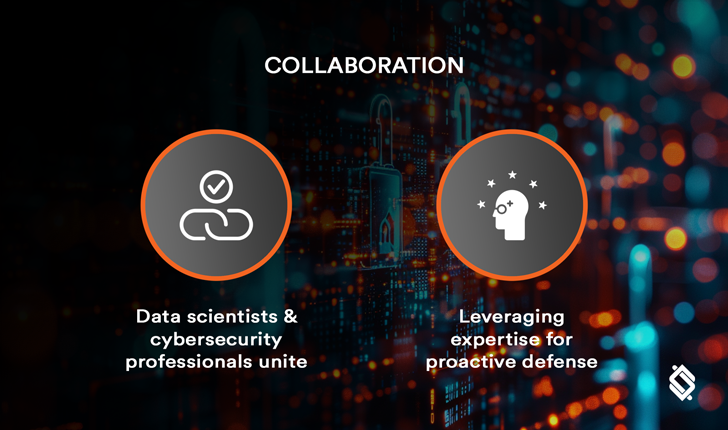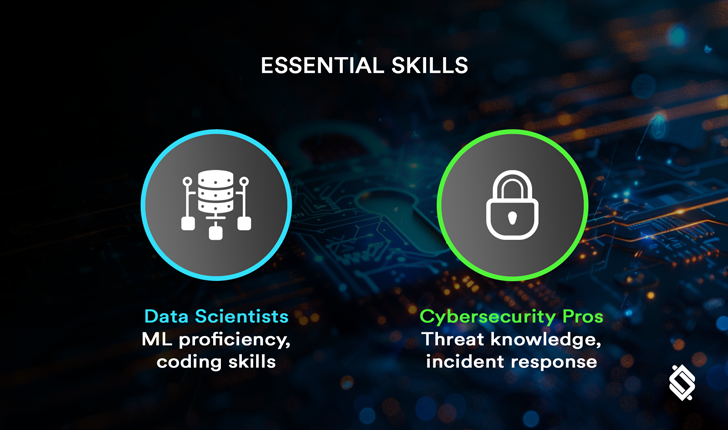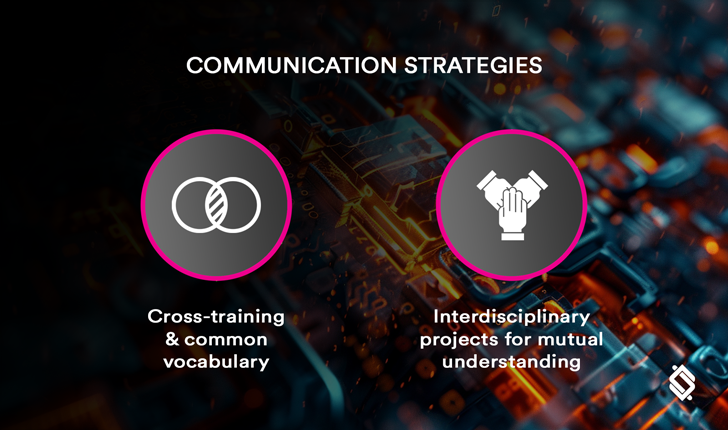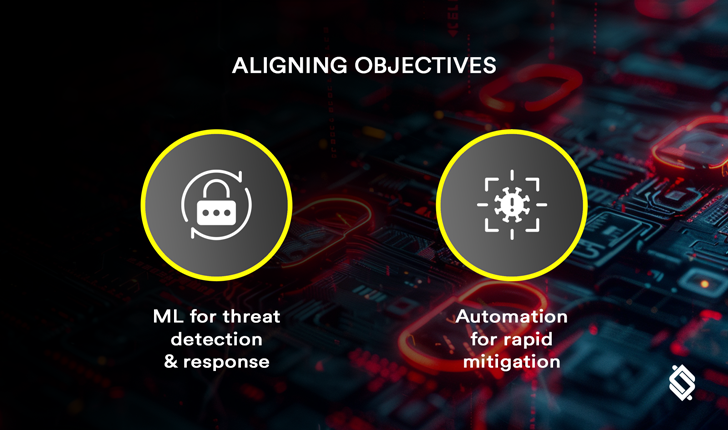In the ever-evolving landscape of technology, data and artificial intelligence (AI) have emerged as game-changers, revolutionizing industries and reshaping business landscapes. Among the myriad applications of these technologies, their impact on cybersecurity is profound. As threats become more sophisticated, technology leaders must adapt, leveraging data and AI to fortify their defenses. In this blog post, we delve into the importance of building a successful MLSecOps (Machine Learning Security Operations) team, emphasizing the collaboration between data scientists and cybersecurity professionals.
Understanding the Landscape

Data and AI have opened up new horizons in cybersecurity, enabling proactive threat detection, rapid response, and robust defenses. Traditional security measures, while still vital, often struggle to keep pace with the dynamic nature of cyber threats. Herein lies the significance of MLSecOps—a holistic approach that leverages machine learning (ML) algorithms, big data analytics, and cybersecurity expertise to fortify organizational defenses.
The Role of Collaboration

At the heart of MLSecOps lies collaboration—the synergy between data scientists and cybersecurity professionals. Data scientists bring their expertise in data analysis, algorithm development, and predictive modeling, while cybersecurity professionals contribute their understanding of threats, vulnerabilities, and defensive strategies. Together, they form a formidable team capable of anticipating and thwarting even the most sophisticated attacks.
Essential Skills and Knowledge

For a MLSecOps team to thrive, each member must possess a unique set of skills and knowledge:
Data Scientists
- Proficiency in machine learning algorithms, including supervised and unsupervised learning techniques.
- Expertise in programming languages such as Python, R, and SQL.
- Familiarity with big data technologies like Hadoop and Spark.
- Ability to interpret and visualize complex datasets effectively.
Cybersecurity Professionals
- In-depth understanding of cyber threats, attack vectors, and malware analysis.
- Proficiency in security tools and frameworks, such as SIEM (Security Information and Event Management) and IDS/IPS (Intrusion Detection and Prevention Systems).
- Knowledge of networking protocols and systems architecture.
- Experience in incident response and forensic analysis.
Effective Communication Strategies

Clear communication is paramount for the success of a MLSecOps team. Data scientists and cybersecurity professionals often speak different languages, with distinct terminologies and methodologies. Bridging this communication gap requires:
Cross-Training
Encourage team members to familiarize themselves with each other's domains through workshops, training sessions, and collaborative projects.
Common Vocabulary
Establish a shared vocabulary that facilitates meaningful discussions and prevents misunderstandings.
Interdisciplinary Projects
Encourage interdisciplinary projects where data scientists and cybersecurity professionals work together from the outset, fostering mutual understanding and respect.
Aligning ML Objectives with Cybersecurity Goals

To maximize the efficacy of MLSecOps, it's essential to align ML objectives with cybersecurity goals:
Threat Detection
Develop ML models capable of identifying anomalous behavior and potential threats within the network.
Vulnerability Assessment
Leverage ML algorithms to assess and prioritize vulnerabilities, enabling proactive patch management.
Incident Response
Implement ML-driven incident response systems that automate threat containment and remediation processes.
Conclusion

In conclusion, the integration of data and AI into cybersecurity practices heralds a new era of defense against cyber threats. By building a successful MLSecOps team that fosters collaboration between data scientists and cybersecurity professionals, organizations can stay ahead of the curve, proactively identifying and mitigating threats.
With the right skills, effective communication strategies, and alignment of ML objectives with cybersecurity goals, technology leaders can harness the full potential of data and AI to safeguard their digital assets in an increasingly hostile cyber landscape.



